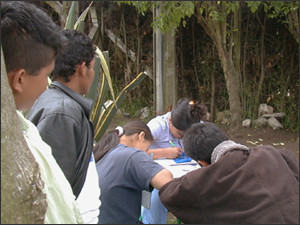The best picture?
Colombia, March 2, 2001.
From Medellin I've come here to a refuge run by a non-governmental organization but under the direction of the Colombian government division for Family Welfare. Here children who have been involved as combatants in the armed conflict find safety and help adjusting to civilan life.
The rules for visitors are very strict--no photos showing recognizable faces. No stories that will reveal the identity of the children or the location of the place they are staying. "We've had threats," the staff psychologist tells me. "And we're afraid they could be kidnapped and taken back to the war zone."
Some of these children and teens turned themselves in voluntarily, others were captured by the Colombian army and miss their comrades in arms and the only life they've known.
The kids, shy at first, love seeing their pictures on the screen of my small digital camera. They want me to photograph their faces to show their whole body, to pose with their friends. The staff also look over my shoulder and remind me about the dangers of revealing too much. "You can't use this one. Now that one, that's the best," I'm told about an image I would normally delete.
The classes here consist mainly of drawing and very simple exercises. Most of the children have had little or no formal schooling. But one boy looking at the address tag on my camera bag pronounces my name Do-na De Ce-sar.
I ask him how many grades he finished at school. "Hasta quinto (fifth grade)," he responds shyly. "And my name is Cesar too," he adds smiling.
